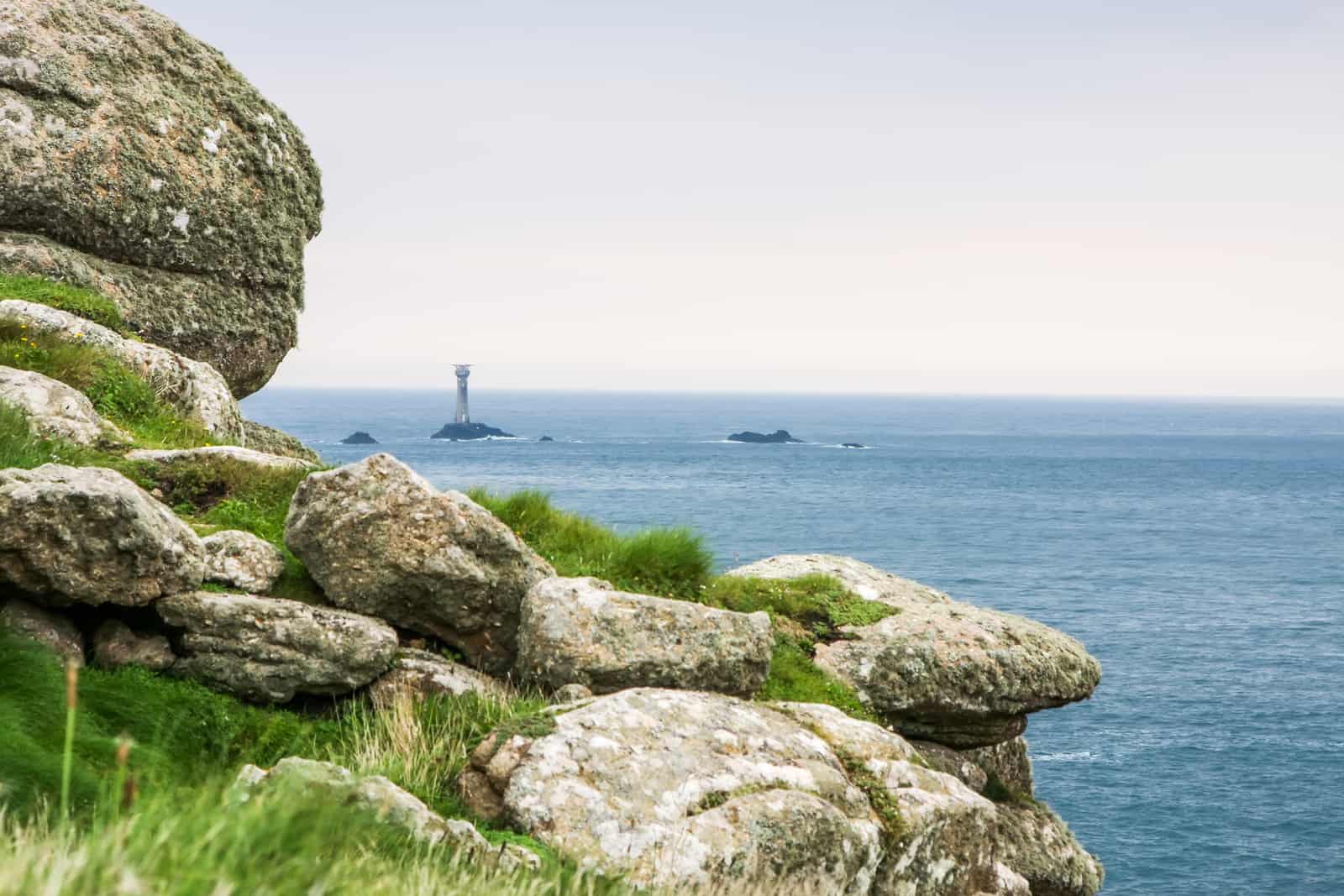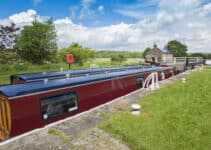Welcome back to Canal Boat UK. Today I am tackling a question that I have seen raised a lot in the narrowboat community. Can a canal boat go in the sea? How about coastal waters? These are the questions I hope to answer today.
Can a Narrowboat Go in the Sea or Coastal Waters?
There are different types of canal boats, but we will start first with a narrowboat. These boats were specifically designed to work on the thin canals of the United Kingdom, and were the backbone of the industrial revolution there. In the early days, horse drawn narrowboats were used to transport all manner of goods.

Is it Possible for a Narrowboat to Go in the Sea or Cross the Channel?
The short answer is yes. But the long is answer (for most people) is a firm no 🙂 Let’s explain.
As I stated above, a narrowboat is designed in this way to fit on narrow canals. These inland waterways are calm, having at most a strong ripple on the surface. Compare this with the type of waves you might see on the open sea. The narrow hull of the narrowboat has the potential to become unstable in such conditions.
Not only that, remember that a narrowboat has a flat-bottomed hull. The type of boats usually seen at sea have a V shaped hull to better cut through the water and offer the boat extra stability in rough waters.
The other problem is that a narrowboats well deck would be very prone to flooding (and thus sinking the boat) in rough waters.
Finally, most narrowboats have pretty weak engines that are only designed to poodle along at 4mph on canals. With any half decent strong current against them, they would pretty much come to a standstill!
As you can see, if you own a narrowboat it’s better staying inland.
How about coastal waters in a narrowboat?
For all the reasons mentioned above, a narrowboat is not that stable in open waters, and cruising coastal waters is not really recommended.
However, if you have the required skill and equipment, it may be possible on calm days. To be honest, it would be seen as something an experienced boat owner might do to challenge themselves and their equipment, not something that the average person should try. Imagine you try it on a calm day. What’s to say that the weather might change, and you are stuck in what would be a very scary situation for most. It’s simply not worth it!
Having Said All of That…..
There are some people that want to test a narrowboat to the limit and have in fact used one in the sea or even crossed the channel to France.

As you can see above, Terry and Monica from the Narrow Dog blog did actually take their narrowboat Phyllis May all over the open seas. They do however mention on their blog that they did this ‘against informed advice’. And they wrote books about the experience, so clearly it wasn’t a straightforward run-of-the-mill experience 🙂
Going into the sea and/or coastal waters with a narrowboat can be possible if you wait for totally calm conditions. You also need a narrowboat that has been properly sealed against the conditions on the open sea. Well sealed windows and doors, and a way to stop the well deck flooding for a start. On top of this, you need an experienced helmsman that knows how to navigate such waters, along with the proper equipment (including a VHF marine radio).
If you don’t know what you are doing, you could sink your narrowboat. And when boats designed for the ocean have the potential to get into trouble there, why risk it in a narrowboat that clearly isn’t.
So yes, it is physically possible to use a narrowboat in the sea and coastal waters, but it is not recommended for anyone but the most hardcore and experienced helmsmen 🙂
On top of all of this, most narrowboat insurance policies won’t insure you in the open waters of the sea.
If you are still thinking about it, just take a look at the video from Foxes Afloat below taken on the Ribble Link. Yes, narrowboats can and do go on places such as this and Breydon Water, Trent Falls, Bristol Channel and the Tidal Thames. But you can see they struggle here in these tidal waters, so clearly they would be in great danger in the sea or coastal waters on anything but the calmest days.
And Foxes Afloat were using a brand new narrowboat with a relatively strong engine!
Can a River Cruiser Go in the Sea or Coastal Waters?
A river cruiser is much more boat like (in the traditional sense) than a narrowboat. It has a V shaped hull and is made out of fibreglass. These river cruisers are used to cruise inland waterways, including rivers and canals.
The fact that a river cruiser is more like a traditional sea faring boat makes it much more stable and suitable for the open sea.
So yes, a river cruiser can totally do coastal waters and open sea, much better than a narrowboat anyway 🙂 Although most smaller river boats would be better off sticking to coastal cruising 🙂
However, make sure that your river cruiser has a decently powered engine. Open sea with a low-powered engine is a recipe for disaster. The problem with some river cruisers is they might come with an engine only suitable for slow cruising in calm waters.
Additionally, make sure that the crew has experience of sailing and navigating in open waters. You need VHF marine radios and maps, and must know how to use them.

Some Considerations for Taking a River Cruiser in the Sea
The Hull and Propellor
If your river cruiser has a shallow or low profile hull, you are better off sticking to coastal cruising at best. These shallow hulls don’t have as much stability in the open seas. Also, the propeller will be doing a lot more work in the sea than on a river, so make sure it is suitable and in good condition.
The Fuel Tank
When a river cruiser has been on these calm waters for many years, sediment can build up in the fuel tank that is never dislodged. However, as soon as you take it into rougher seas, the extra action inside the fuel tank will dislodge it and cause the dreaded fuel bug. Make sure you clean out the fuel tank of any long time river cruiser you want to take out to sea.
The Electronics
There are electronics that may have been neglected whilst cruising inland waterways, as it’s not needed. In the open sea these electronics will be greatly relied on, so make sure to check out any river cruiser’s electronics thoroughly before taking out to sea.
The Engine
After poodling around rivers at slow speeds, you will be suddenly expecting a river cruiser’s engine to rev up and tackle more demanding conditions in the sea. This can cause overheating and other related engine problems. Make sure to break your engine in slowly and fully check it out first. If you can find a stretch of river without speed limits to test the engine at higher speeds for extended periods, this would be perfect before going to open waters 🙂
And Finally
If you plan on taking any boat into the ocean, read up on the Royal Yachting Association extensively, they have some excellent information there.
I am a rather cautious person, and would say most other inland boat owners will probably have similar feelings to me. Stick to what you know, the inland waters (especially if you have a narrowboat).
If you are the adventurous type, make sure you are fully trained and prepared before you take any vessel out into open sea. People have died on fully sea worthy boats when not prepared, so this is the most important factor.
If you have any experience of taking a canal boat out into open sea, we would love to hear all about it in the comments section below.



![What Happened to Cruising The Cut [Narrowboat Youtuber]](https://canalboatuk.com/wp-content/uploads/2022/08/cruising-the-cut-youtube-channel-211x150.png)
